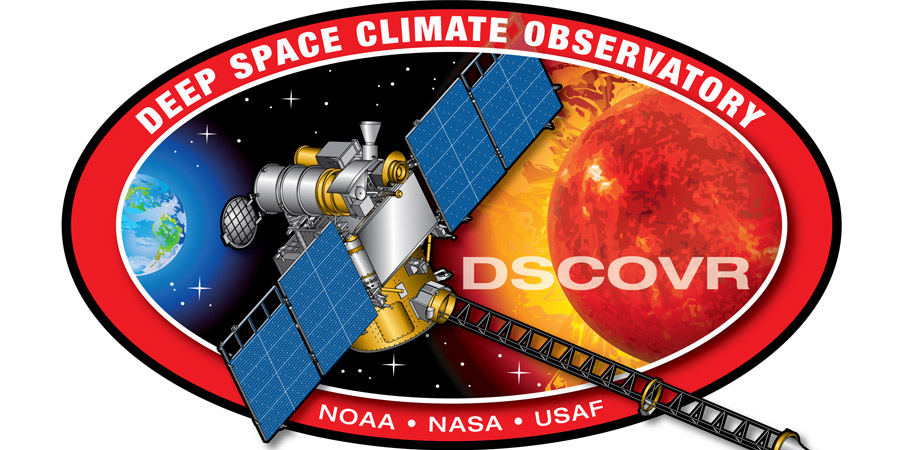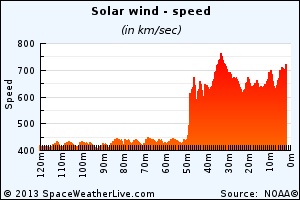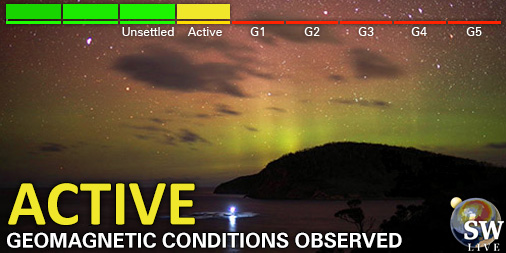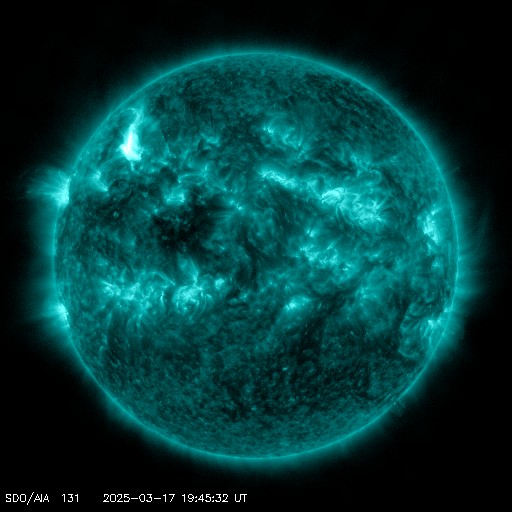DSCOVR launch
Saturday, 7 February 2015 21:40 UTC

Tomorrow will be an exciting day for every space weather enthusiast out there as the Deep Space Climate Observatory spacecraft, or DSCOVR will launch into space from Cape Canaveral, Florida. DSCOVR will be operated by NOAA and is set to succeed the role of NASA's Advanced Composition Explorer (ACE) in providing real-time solar wind data from the L1 orbit which is the neutral gravity point between the Earth and the Sun approximately 932.000 miles (1.5 million kilometers) from Earth.


Image: Solar wind graph provided by SpaceWeatherLive using data from ACE showing the arrival of a coronal mass ejection.
DSCOVR also promises to deliver more reliable solar wind measurements than ACE. Strong solar radiation storms should no longer provide false solar wind data, something which ACE is unable to do right now. The video below from NOAA gives an impression what the DSCOVR mission aims to achieve:
Advanced Composition Explorer (ACE)

Image: ACE at L1.
What will happen to ACE? ACE was launched in 1997 and is still in working order. The spacecraft has fuel to maintain it's orbit untill 2024, but it is operating well beyond it's expected life-time as the mission was planned to only last 5 years. DSCOVR is expected to reach L1 in 115 days after launch which means that NASA is expecting to hand over DSCOVR to NOAA around mid-summer. When the time is there for us to switch over from ACE data to DSCOVR data we will be sure to let you know!
Watch the launch live on NASA Television beginning at 3:30pm EST on 8 February, 2015 at http://www.nasa.gov/multimedia/nasatv
Sources: 1, 2
Thank you for reading this article! Did you have any trouble with the technical terms used in this article? Our help section is the place to be where you can find in-depth articles, a FAQ and a list with common abbreviations. Still puzzled? Just post on our forum where we will help you the best we can!
Current data suggests there is a slight possibility for aurora to appear at the following high latitude regions in the near future
Gillam, MB, Whitehorse, YT, Yellowknife, NTFairbanks, AK, Utqiagvik, AK
Latest news
Latest forum messages
Support SpaceWeatherLive.com!
A lot of people come to SpaceWeatherLive to follow the Sun's activity or if there is aurora to be seen, but with more traffic comes higher server costs. Consider a donation if you enjoy SpaceWeatherLive so we can keep the website online!

Latest alerts
03:36 UTC - Hemispheric Power Index
The OVATION model predicts the Hemispheric Power Index to reach 52GW at 04:37 UTC
Monday, 17 March 2025
21:15 UTC - Geomagnetic activity
Active geomagnetic conditions (Kp4) Threshold Reached: 20:59 UTC
19:54 UTC - Solar flare
Moderate M1 flare
19:39 UTC - Radio Blackout
Minor R1 radio blackout in progress (≥M1 - current: M1)
Space weather facts
| Last X-flare | 2025/02/23 | X2.0 |
| Last M-flare | 2025/03/14 | M1.1 |
| Last geomagnetic storm | 2025/03/14 | Kp6- (G2) |
| Spotless days | |
|---|---|
| Last spotless day | 2022/06/08 |
| Monthly mean Sunspot Number | |
|---|---|
| February 2025 | 154.6 +17.6 |
| March 2025 | 133.4 -21.2 |
| Last 30 days | 138.6 -20.1 |




